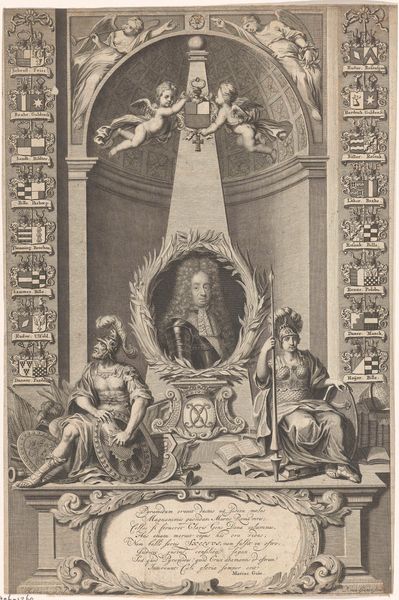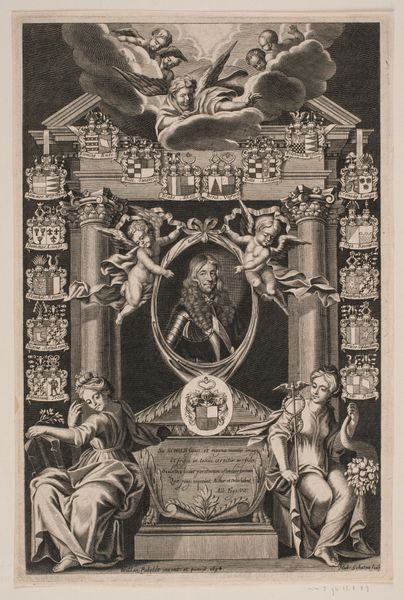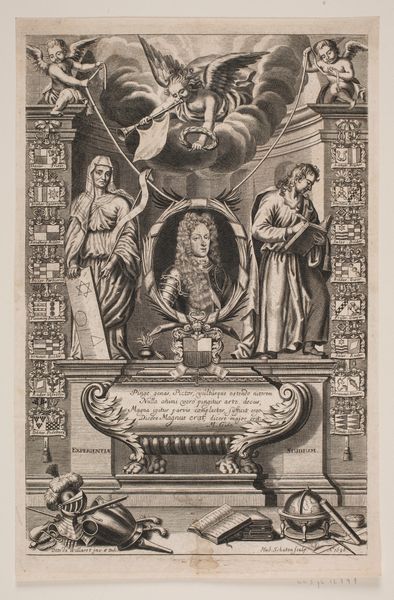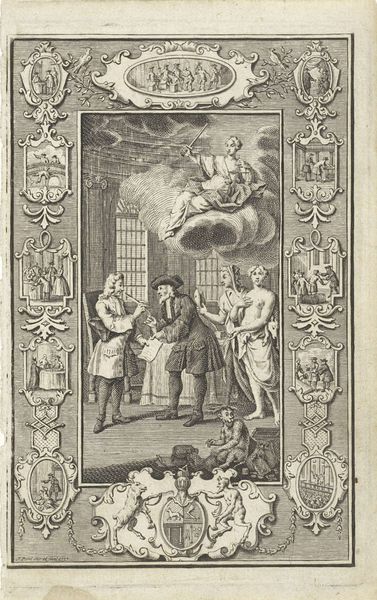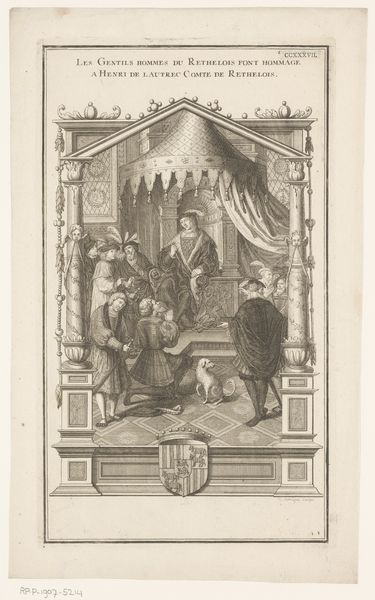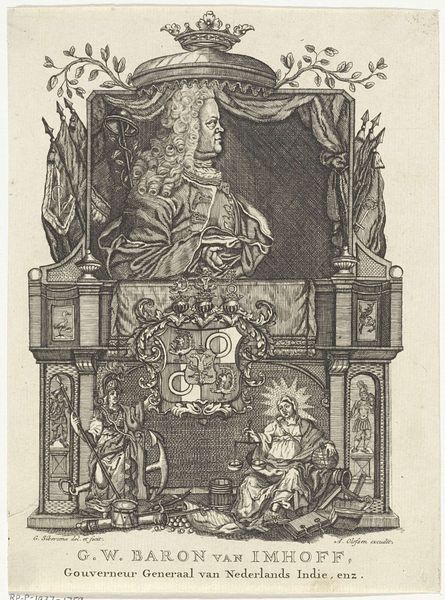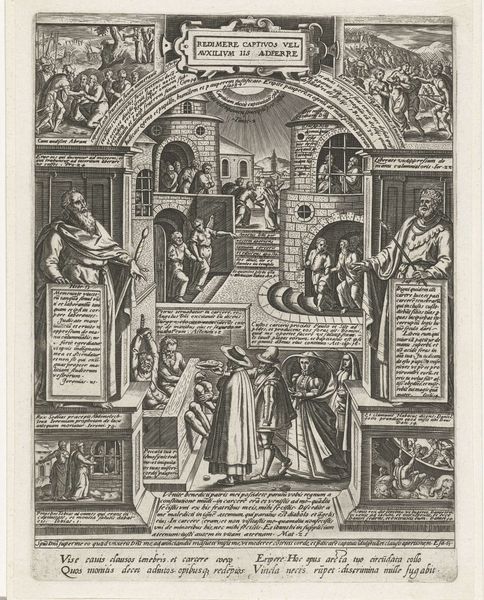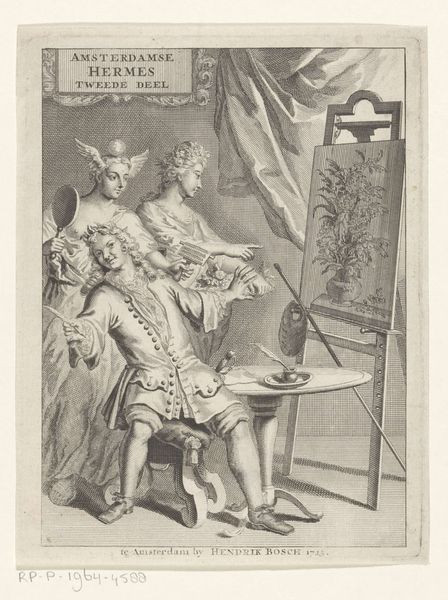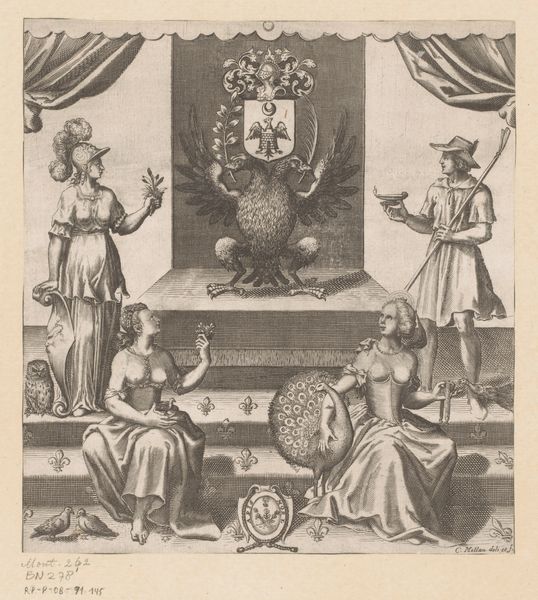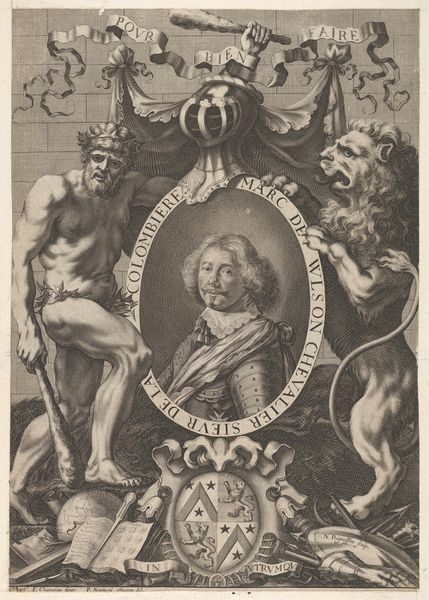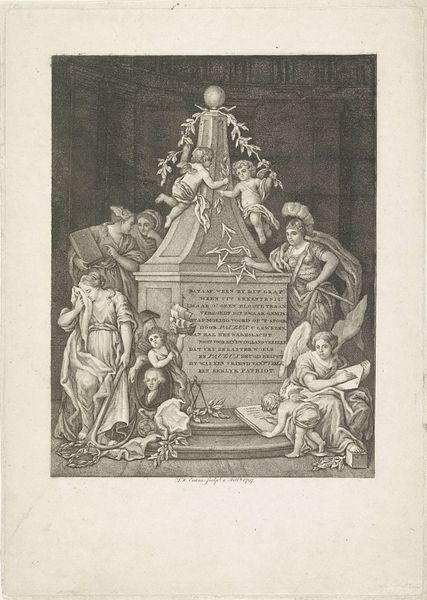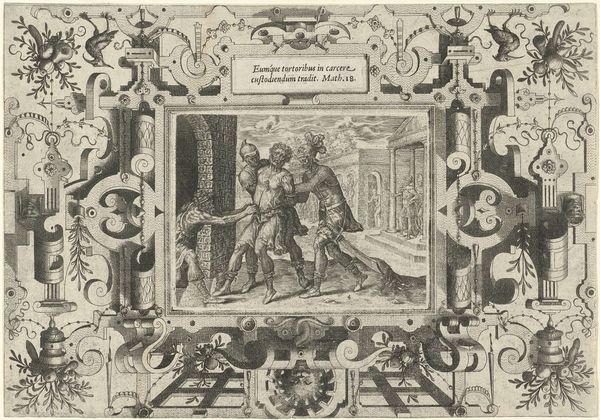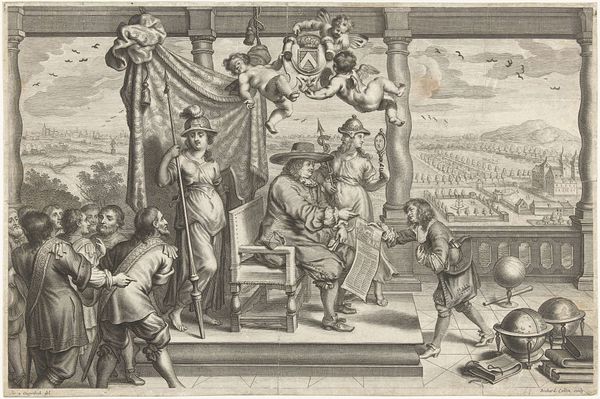
print, engraving
#
portrait
# print
#
portrait reference
#
history-painting
#
engraving
Dimensions: 534 mm (height) x 399 mm (width) (bladmaal)
Curator: Let's delve into this engraving from the 1670s by Hubert Schaten, titled "Mandrup Brahe.” It resides here at the SMK, Statens Museum for Kunst. Editor: What strikes me is the overwhelming sense of solemnity. The subject, framed by heraldry, seems almost imprisoned by history, a heavy weight reflected in the mourning figure at the base. Curator: Indeed. These so-called history-paintings, especially portrait references like this, are rife with symbolism. Brahe, a figure of nobility, is encased in a visual tapestry of lineage and power. Consider the strategic use of family crests; the man in armour, and the book. All testaments of success. It tells a very specific story aimed at cementing social position and political ideology. Editor: It does more than cement; it practically entombs him! The angel trumpeting above feels less celebratory and more like a funereal announcement. It's all very deliberate in its messaging, and who gets to tell that story. It is, visually speaking, overwrought; each element vying for attention, which unfortunately renders the portrait of Brahe himself almost secondary. Is he an individual, or just an effigy of a family dynasty? The question comes to mind when considering similar paintings throughout European history. Curator: The artist operates within the conventions of the time. Engravings, as accessible prints, played a key role in disseminating these visual representations of power beyond elite circles. It’s a powerful tool for propagating ideals about aristocracy. Schaten uses his skill to reinforce that framework. Editor: Exactly. The very act of replication transforms Brahe's image into a brand of sorts. And I cannot help but notice who is mourning and whose crest adorns every corner of the frame. There seems to be many different faces but is that to highlight individuality, or dynasty? Curator: A crucial observation. By the act of circulating these prints, Schaten shaped how the emerging bourgeois society perceived figures like Brahe and by extension the entire political landscape. This engraving tells us more about the societal machinery behind the image rather than Mandrup Brahe himself. Editor: It leaves one to ponder who exactly is benefitting from these images and what role did these families have in colonial atrocities around the world? Food for thought when standing in front of this artwork. Curator: Precisely. Looking beyond the aesthetic appeal allows us to see its profound societal and political functions, enriching our understanding. Editor: A reminder that art, regardless of its beauty, never exists in a vacuum and is also testament of the history and struggles throughout the course of humanity.
Comments
No comments
Be the first to comment and join the conversation on the ultimate creative platform.

